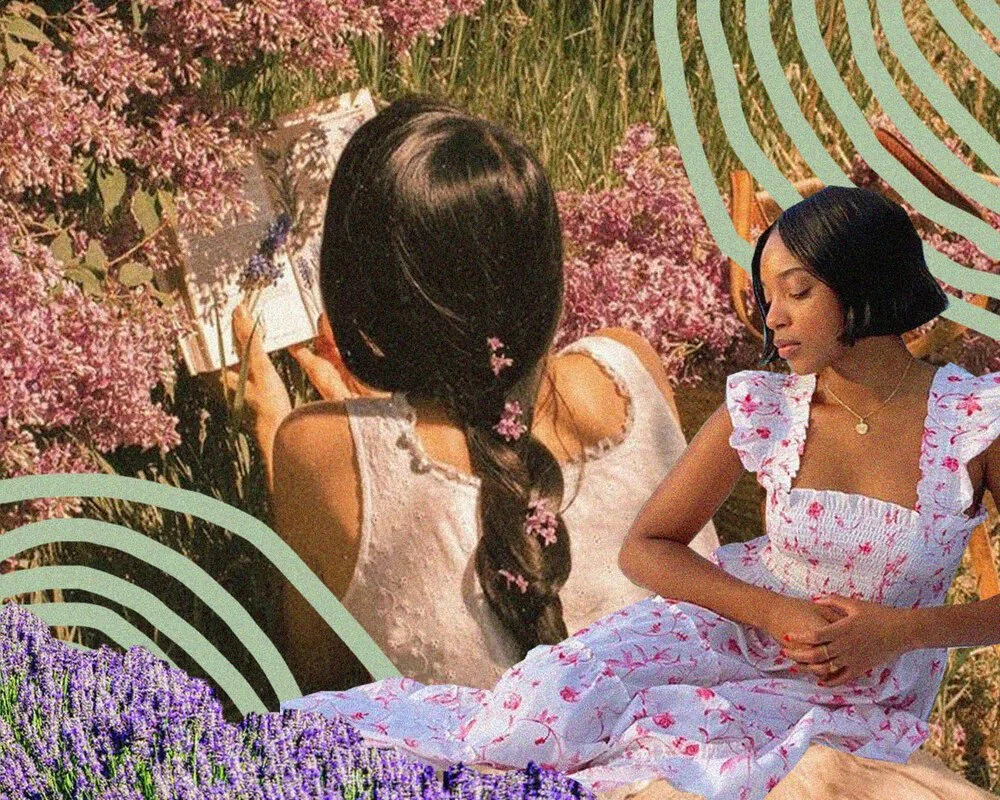The Veiled Escapism of the Eclectic Cottagecore Aesthetic
Image Courtesy: Strike FSU
The furrowed Mr. Darcy trudged through the dewy moors, his silk breeches slicked in mud, as dawn broke over the horizon and illuminated the idyllic Bennet estate. In rereading the classic Pride and Prejudice, I envisioned myself through the weary eyes of Miss Elizabeth Bennet, glossed over in melancholic bliss by the loving embrace of Mr. Darcy, who was evidently bewitched, “body and soul.” In effervescent fervor, I indulged in the escapism of Regency era literature and further enshrined the fantasy with cottagecore attire, relishing in the sense of catharsis experienced by dissociating from the realities of our pandemic lifestyle.
The cottagecore aesthetic appeals to our intrinsic desire to reconnect with nature and succumb to the innate intimacy of pastoral life. While we are once again condemned to the confines of the home in perpetual quarantine, cottagecore fashion provides liberation from dreary monotony by romanticizing the simplicity of rural domesticity. Envision wicker baskets collecting home-grown flowers, fresh linen draped over clotheslines, crackling flames emanating from a brick-laden hearth, and luscious strands of ivy entwined over a quaint, countryside cottage. Cottagecore represents nostalgia for a pristine, harmonious wilderness refined by expressions of elegant femininity. This genre of fashion manifests itself as an eclectic patchwork of romantic styles, reminiscent of simpler times and contemporized by utopian undertones.
Themes of an idealized, rustic paradise found in modern cottagecore fashion are derived from the arcadian aesthetics of renaissance literature. Most notably is the pastoral literary work of Jacopo Sannazaro in the 1480s, who wrote the poem Arcadia to describe “perpetual spring, sensuality, and a landscape that was both placidly bucolic and yet untamed.”
“Woods and hills of the most delightful beauty,
Full of leafy trees and a thousand sorts of flowers,
Among which were seen the many herds at pasture,
Winding with pleasure through the green field”
Throughout the poem, the ethereal landscape of Arcadia is juxtaposed by mythical elements of nymphs and heaven that ascribe a sense of divine purity to the natural world. Evermore, the transcendent mysticism of pastoral literature inspires the serenity of cottagecore dreams.
The predominant stylings of the cottagecore trend emerged from relics of the Regency and Victorian eras, and were characterized by the cinematic portrayals of period pieces such as Pride and Prejudice and Little Women. As a certified Janeite, I noticed that the Pride and Prejudice gowns are worn in the 1995 BBC television show and the 2005 film with Keira Knightley have permeated into the mainstream, retaining the modernized characteristics of a square neckline adorned with puff sleeves, a smocked bodice, and a high-waisted flowing skirt.
Oscar-winning costume designer Jacqueline Durran, who also contributed towards Pride and Prejudice (2005), molded agrarian aesthetics of cottagecore after the earth tones, embroidery, billowing poet blouses, and high-waisted trousers featured in Little Women. The feminine connotations associated with Durran’s costumes serve as a conduit to explore gender fluidity, where the ruffled, frilly blouses of Timothée Chalamet’s character challenge hegemonic masculinity by embracing inclusivity. This non-binary duality is also achieved through the edgy, somewhat masculine costumes of our heroine, played by Saoirse Ronan.
The remaining tenets of cottagecore fashion can be categorized as dainty and delicate, constituting the aesthetic attributes of elegant femininity. The exquisite detailing of sweetheart-neckline corset tops, collars and socks webbed in intricate lace, precious lockets and pearl necklaces, and floral embellishments are a reflection of the beauty found in the natural world. While such extravagant pieces were once heralded as indications of social class, modern cottagecore couture can be sustainably sourced through thrift shops, local artisans, and inexpensive Etsy knockoffs.
The emergence of cottagecore fashion in the midst of the global pandemic has signaled a growing reverence for a simple life. One where you can take the time to perfect homemade sourdough, or learn to crochet or read your favorite Jane Austen novel. The resurgence of antiquated styles means a return to timeless values, and a renewed appreciation for the little things. The next time you picnic in your cottagecore attire, stretching out over a woven gingham blanket as you pick at a charcuterie board, remember to stop and smell the roses.
Strike Out,
Writer: Noelle Knowlton
Editor: Alyson Brinkley
Graphics: Ali MacCloud
Tallahassee





